-
 Bring the Outdoors into Your Home: Ideas for Home Decor with Plants. Plus 10 Perfect Indoor Plants for Your Living Space (2020)
Bring the Outdoors into Your Home: Ideas for Home Decor with Plants. Plus 10 Perfect Indoor Plants for Your Living Space (2020)
-
 Why You Must Gift a Plant: 15 Plants to Buy Online + The Benefits of Plants at Home and 4 Tips on How to Buy Them
Why You Must Gift a Plant: 15 Plants to Buy Online + The Benefits of Plants at Home and 4 Tips on How to Buy Them
-
 10 Tree Gifts You Should Be Gifting in 2019: Bonsai, Dwarf Trees, Saplings and Potted Plants & Tips on Caring for Plants
10 Tree Gifts You Should Be Gifting in 2019: Bonsai, Dwarf Trees, Saplings and Potted Plants & Tips on Caring for Plants
India: A Treasure Trove of Beautiful Yet Undiscovered Tribal Art Forms

India, one of the oldest civilizations in the world, has a deep cultural heritage, unparalleled anywhere in the world. Tribal art forms are an integral part of this centuries old rich art and cultural legacy. From Kalamkari of Andhra Pradesh to Madhubani artwork of Bihar, every state has its own surplus of beautiful handicrafts and an artisan workforce brimming with talent and requisite skillsets. Despite this huge diversity of art and craft and an existing trained workforce, the industry is struggling to sustain itself. The fault lies in the very nature of the Indian handicrafts sector and its largely unorganized state.
Artisans all over the country, despite being capable of creating artwork worth lakhs, struggle in the clutches of ceaseless poverty. Lack of business understanding, illiteracy, negligible design thinking and the largely unorganized state of the industry leaves the artisans vulnerable to being cheated, used and manipulated by middle men and brands that seek to satisfy their own needs. While the artisans suffer to make ends meet, customers are unfairly charged almost ten times the actual price of a handicraft by brands. As a result, most artisans abandon their family business to pursue more economically rewarding careers, migrating to cities and ending centuries old traditional practices passed from generation to generation.
Fortunately, for Indian art lovers, some socially conscious Indian start-up brands have begun to revitalise the handicrafts sector. By employing these artisans and charging the right amount for each product, some of the start-up brands are successfully re-establishing the product chain, helping in organizing the industry and creating an identity and income opportunities for such artisans and craftsmen. Truly Tribal is one such brand.
Truly Tribal: Your One-Stop Destination for Authentic Handicrafts Inspired by Indian Tribal and Folk Arts
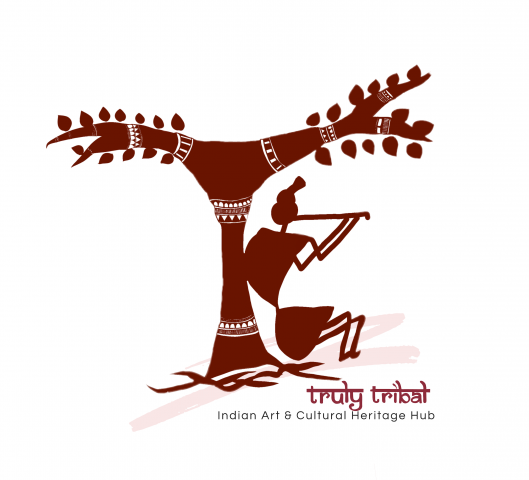
Founded in 2015, Truly Tribal was born out of a need to support, encourage and motivate Indian artisans while promoting and preserving the Indian handicrafts sector. Its founder, Shweta Menon, is a software engineer turned entrepreneur, with an unwavering love for everything artistic and handcrafted. Her birth place, Chhindwara, a small town on the MP-Maharashtra border, formed the root inspiration for the start-up, and was the place where she first developed her understanding and appreciation of tribal art. Though she had been born and brought up in that place, in close proximity of the artisans, it was only when her sister-in-law requested her to source a Gond painting that Shweta realised the artisans' plight and their dying culture.
Today, Truly Tribal works with more than a hundred artisans covering not less than 20 different art forms. The brand started with Madhya Pradesh and Chhattisgarh, and quickly progressed to cover almost 14 Indian states. Through their website, the brand showcases a wide array of handcrafted lifestyle products, ranging from Warli wooden trays to Madhubani hand-painted clocks. Each product is tested, passing through rigorous sampling tests and quality checks before the design is finalised for bulk production. Each design is unique due to its handcrafted and hand painted details. The organization takes pride in calling themselves a social enterprise with a strong inclination towards increasing the artisans' income and creating an identity and a sense of pride in their talents and crafts.
Truly Tribal is more than a business platform as it showcases the rich diversity of ethnic tribal art forms of India. It is a platform which promotes & builds awareness about Indian art & artisans, and provides these artists with a wider audience which is made aware of the extraordinary works of art of these artists and their individual communities.
Shweta Menon – Founder and CEO, Truly Tribal
Bringing Indian Tribal Art Forms Centre Stage with Shweta Menon, Founder, Truly Tribal
- Q. Tell us about yourself and your background.
- I come from Chhindwara, a very small town near the MP-Maharashtra border which is known for Gond tribal art tribal. I belong to an eastern Marwari family but I have done my engineering and I am a computer engineer by qualification. I have been in the hard-core IT industry, software development for 13 years. After that, I tried my hands at consulting and business management, but I have always wanted to do something to give back to society. Something, which is close to my heart.
I am extremely passionate about art and am a very big art enthusiast myself. At the same time coming from a small town where I have seen tribal artisans working and to be honest, I never valued them as a child growing up. I never realised that it was a part of our life. Once I moved out of the town I realised how much exploitation they suffer. I am always on the lookout for artefacts from everywhere I travel to.
During my IT work when I travelled abroad, I realised people appreciate art but they don’t know where to get it, even in the bigger cities, or the industries. Secondly, I know there is no one place where you can get everything. Even if you get some things in the stores, you will not find everything as per your customisation, or otherwise, they are so expensive that you tend to not buy them. When I go and pick up a piece from a big store – a handicraft piece, the astronomical amount of money they charge and I also know how much the artists are getting. Although India has a rich and unbelievable wealth of arts and crafts, however the artisans and craftsmen who are making these are living in very impoverished conditions. Idea is to keep the price affordable so that more people can buy them. In that case, we will have a larger consumer base and at the same time, my artist would get a lot of work as well. Rather than making 10-15 pieces at ₹ 100.00 per piece, if they end up making 50-100 pieces, then they will have a better chance of earning a much larger income.
I know the people who are making these are not getting their dues and that is where I started on my own, and with my technical background, I thought to bridge the gap between the consumers and the actual makers. So that is how Truly Tribal was born. Our major part of vision & objective is - one is a social enterprise that wants to keep these products affordable so that we have a larger consumer base. The other thing is that we want to be a one-stop-shop where you can get everything you want, not just Warli art and Madhubani paintings and even metal artifacts. Also want to be a place where u can get not just the ready off-the-shelf products but also customised & commissioned art work be an Indian Painting or any Brass sculpture or metal handicraft, you will get it all in one place.
- Q. Are you working in the IT sector?
- No, I am completely a full-timer since the time I started and wanted to dedicate time only to this.
- Q. What led you to create Truly Tribal and how did you go about it?
- There have been quite a few incidents that have remained at the back of my mind, apart from seeing the plight of these people. A relative asked me to get her a Gond painting as I am from Chhindwara, the largest Gond tribal belt in India. I contacted an artist who was working in a local tribal museum and he was so excited about the order for a 2 x 3 feet painting that he gave me a 1 x 1 foot painting free as well, charging me around ₹ 5,000.00 for both of them. Afterwards I did some research and found that similar work would fetch ₹ 12,000.00 - ₹ 20,000.00!
I sat wondering if this guy was so happy that I gave him the order, did not negotiate the price and I just gave him whatever he asked and he gave me a free painting along with it. That was the time I realised that he was the one who was making the painting but he was hardly getting anything. So that has remained at the back of my mind. As I have mentioned I have been an art enthusiast myself. Whenever I am looking for some artwork, I often feel - this is matching but this is not exactly what I am looking for, or can somebody help me understand and see if I can get to know the story behind the artist. If I have somebody who can help to reach out to them!
I left my IT job after that and my second child was born. I have been looking out to do something more meaningful. This did not remain a monetary thing anymore and I was looking at doing something I can give back something to society , which will impact other people’s lives. I feel if I can alter and improve even 2-3 people’s lives, it’s enough as a job for me as a person. I am not looking to become a big crusader or something, even 2-3 people is good enough to start the change. Something I have also felt – I have seen my kids or my kids’ friends or even some of my friends, they do not know anything about art. But they talk about how great the aborigine art (a tribal art from Australia) is. I said you know there is an Indian art-form called a Gond painting. They can’t even pronounce the word. Every country has their art, culture and heritage. So I said why not use my technical knowledge and IT background and try to bring awareness to our art forms and bring out these artisans. I started setting out the problems which I faced as a consumer.
I started working with only 3 artists and started buying 3 different kinds of artwork – Gond painting, Dhokra, and Bastar Iron Craft. In sometime I realized it’s not easy to sell things like in ad-hoc manner. So, we started as an online setup where you can get all of these things. I could be one of the few people who take the all legal paperwork and registration of the organization first and then start setting up.. The initial couple years was a major struggle in terms of convincing people to understand the value of the product. Also understood our limitatio and different mean to reach out to larger audience and changed the business model and approach to suit the requirements
- Q. You started off with two or three artists, now how many artists do you work with?
- We have 100+ artists right now and we are dealing in around 20 different art forms with national award winning artisans and master craftsmen leading our team. Initially, we started within Madhya Pradesh and Chhattisgarh, just 2 states. Right now we are covering almost 14 states in India, from Orissa, Telangana, Madhya Pradesh, Andhra Pradesh, West Bengal, Bihar, Jharkhand, UP, Rajasthan, Chhattisgarh, Maharashtra, Karnataka, Gujarat & Assam. I am tapping only the original artists, we do not work with hobby artists at all. For example, I stay in Pune and in & around this place it’s a Warli artists’ hidden destination. Lots of people like you and me would have learned, however as an organization we work with only Warli tribe people who are in that particular belt like the Raigarh & Dhahnu district. We work with these genuine artisans only, even if that means a 5-10% increase in the cost of shipping, the raw materials and getting the work done. This way you get completely authentic work & If these artisans have enough income they will not have to leave their artistic line of work. Typically most Indian art forms witness the generational transition. However, with the onset of technology and so much external influence, the artisans’ kids, and sometimes the artists themselves do not want their kids to do their work as they feel that they can earn better money in other professions. If they have enough money to sustain themselves through these artworks, the kids will also continue the crafts and traditions.
- Q. How do you introduce new products?
- We are trying to bring these art forms into lifestyle products. For example, even if I like paintings, how many paintings can I put up in my house? Even as a gifting option it is very difficult for me to give it to somebody as I don’t know that individual’s aesthetic sense & taste and whether he/she would be interested. So what we thought is we will try to bring these artworks into lifestyle products, like a complete dining collection, sitting area collection, wall décor all influenced with Indian art forms. Now we get hand-painted coasters, tissue paper stands, tissue paper boxes, runners, mugs, cushion covers, wall plate etc. you name it and we have it. Decor products are something which we are leading, and where we do a lot of investment and research. We have a design team who works on these concepts of what products we can make which have a high utility value, or corporate gifting segment. Once the concept is ready with us we identify which artist and what kind of artwork will fit into it and then we take it to that artist. After that product development and marketing happens. Sometimes the product design itself fails, sometimes it works. There are also instances when the market does not receive a newly launched product well. Sometimes the market accepts it wholeheartedly. Out of about 10 designs every quarter, 1-2 takes off for the consumer market. We also standardize the design of each artwork. Standardized designs are also available because a lot of people do not want to go into too much customization. After all, it comes with a price. I would like to have these handcrafted products to be conversation points. take an example: if we get these coaster sets or a dining set done in a Warli or Madhubani painting, a consumer like you and me would not mind gifting it to a recipient’s house – whether it is traditional or contemporary. In that home if an adult or a kid picks it up they should be able to identify the art-form, that it is from India and also, which state of the country. Even if 1-2 children get to know it remains with them and they spread the knowledge amongst others and take it forward.
Truly Tribal's Hot-Selling Products
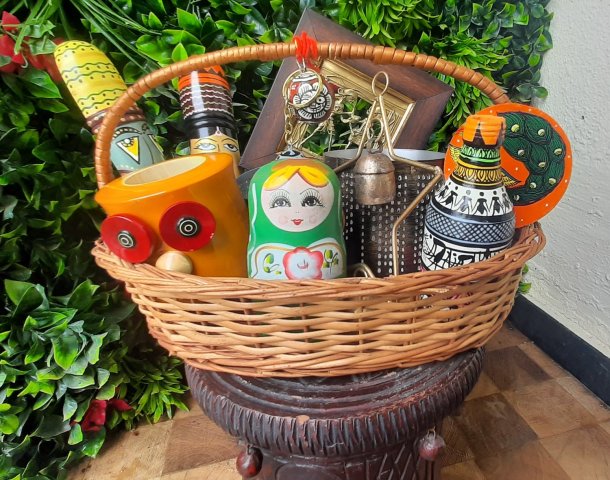
Wall Plate (Shield) - Pattachitra Krishna Leela (Large)
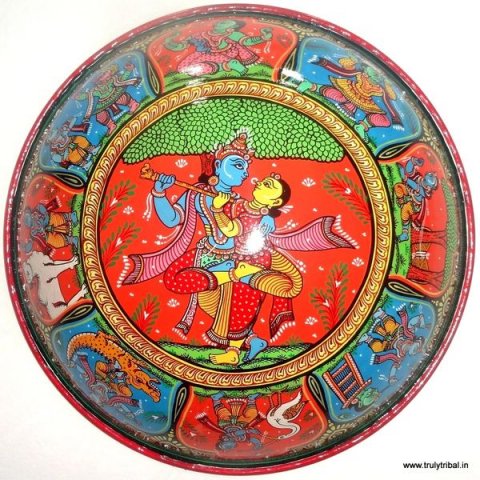
Pattachitra is an ancient art form prevalent in the eastern part of India particularly Odisha. The art form is noted for its intricate floral border and depiction of mythological characters and folktales. This beautiful shield depicts Lord Krishna serenading Radha under a peepal tree. Weighing 1.5 kg, the shield's size is 21 inches and it is available for ₹ 5,000.00 here.
Wall Clock - Hand Painted Madhubani

Madhubani paintings are one of the most popular folk art styles of India which comes from the Mithila region (modern day Madhubani District) of Bihar. These paintings are made using fingers, nibs, matchsticks and twigs along with natural dyes and pigments like turmeric, cow-dung, rice, soot, etc. Its origins can be traced back to the times of the Ramayana. This beautiful and unique wall clock with Madhubani paintings is crafted by renowned Madhubani artists and is sure to become an attention-grabber in your home. Priced at ₹ 2,000.00 you can buy it here.
Gond Painting - 11" x 15" - Bird and Tree

Gond paintings are an extremely popular folk and tribal art form practised by the largest tribal community in India who primarily live in the central parts of India which are majorly in the state of Madhya Pradesh and Chhattisgarh. Gond art is vibrant and fluid and depicts nature in various forms. This exquisite Gond unframed painting depicting a bird and tree design having dimensions 11 x 15 inches is available for ₹ 1,300.00 here.
Where Can You Find Them?
www.trulytribal.inTruly Tribal's Innovative Steps for Reviving India's Handicrafts Industry
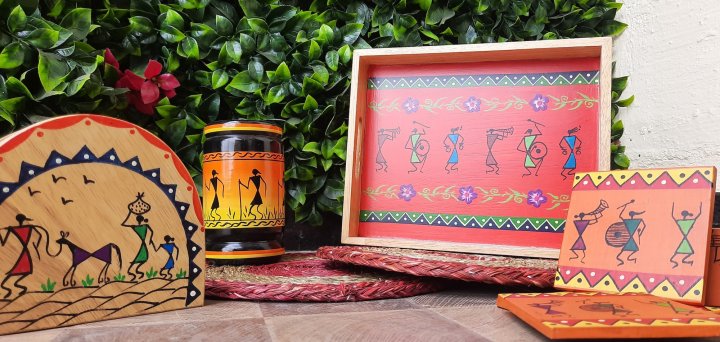
- Q. You also host art workshops. Tell us how that came about.
- Honestly speaking, it’s the pandemic that brought us into this. We were primarily into standard or customised handicrafts and commissioned art work, art-influenced items and customising interior solutions. But last year when the pandemic started, we realised that the artists do not have any work and the exhibitions of all artists were getting cancelled. So, we started training our artists – we thought why not bring them to an online platform when everybody is sitting at home.
We spent a lot of time training these artists even to make them open Zoom, Google Meet and to set up their cameras, that too remotely. Yes, it has been a journey and they adapted pretty fast. Initially, we started with training the artisans to conduct online sessions as early as in the first week of April 2020. We realized that many people were interested learning from there traditional artists and the artists were also very excited to learn new things. We discovered that this was the medium where we could provide adequate exposure and it was a great way for promoting art and letting people know about different art forms, not necessarily as a prospective consumer of the products. Even if they want to learn and even if they don't want to learn we conduct a lot of these sessions where we just bring about awareness and let the people know about these artists.
Sometimes we conduct tours of the workshop or show the people how these artists live. It’s like introducing them to the lifestyle of these artists and the artists are also very excited. We found it is a very innovative way of spreading awareness not just about the art form, but even for bringing these artisans forward.
- Q. How do you ensure quality of your products?
- One of the major things we are doing is that we are working with different artisans across states in India. Not only that, we are working only with traditional artists and state & national award-winning artists. In the initial days, we did a lot of sampling and concept creation with them. Once they come up with these products, we keep everything with us, use them initially and even during the trials. We have conducted quite a few trials and we discovered that sometimes the finish of the end product was not proper or the paints were peeling off. We have a lot of trials, sometimes they are not even worth it, but yes, we are ensuring that we have the products with us in terms of ensuring the quality. I even used them personally at times.
- Q. What are you hoping to achieve for Indian handicrafts with your venture?
- From the organisation’s perspective, there are 2-3 goals which we want for our artisans:
- Increasing the earning capacity of the artists, ensuring that they don’t leave their art forms professionally and that their kids take them up as a profession.
- I want these artists to be known by their names. People should be aware that these are the artists behind these artworks and get to know about their lives & lifestyle.
- We would like to have a larger consumer base and definitely, we want to make more people aware of Indian art forms.
- Another thing that we are hoping for is awareness building about traditional Indian art forms for our current & next generation. The major thing among the current and the next generation that matters is the need to start appreciating different Indian art forms and they cannot appreciate it till they don’t see and use it themselves.
- Q. You wanted the artists to be known by their names. Do the artists sign-off for the work they do?
- Not everything is signed off as some of these traditional art forms by natures doesn’t have artist signature, and they don’t sign it off. A Madhubani painting or any folk painting is never signed off by the artist because it is considered a community activity. But what we are doing is, specifically in the corporate orders, and we want to take this further in the consumer segment as well, for every product, there is a small leaflet enclosed describing - the person who made it, their story along with their photo. That's the ultimate thing which we are trying to achieve and even though we are yet to reach there, I think by the end of this year we will have that as well.
- Q. What makes Truly Tribal distinct from other similar brands?
- We are a social enterprise. We are not into hard-core business, though we will not say we are an NGO. We are for-profit but we have a very strong social intent. Second differentiation is that we are a lot into customized product design & commissioned art work, apart from off-the-shelf ready handicraft products. Suppose you are looking for a painting or a hand-painted décor item for your house, we are in a position where we can customize to the level wherein you can send the photographs of your ask for the required color combination you are looking for. We would be ensuring that everything is done only by the traditional genuine artists – the artwork will be completely authentic and an authentication certificate can also be provided if required. This is where we differentiate ourselves from others, that we put our art and artisans first and only then comes the business.

- Q. What are your own interests? Do you dabble in these art forms?
- Before I got into this line of work I used to think of myself as an artist. Now I don't even call myself an amatrue anymore after working with so many artists. Personally, I would do a lot of pencil sketching and charcoal shadings and things like that. I am pretty well versed with Madhubani and Warli paintings and other similar art forms including Pattachitra as well.
I love travelling and exploring the places. And would always collect the artifacts from different places. Whenever somebody asks me what to get, I ask for some traditional artefact from that place. I have artefacts from Africa, from the USA – I mean this is what I always collect and people used to make fun of me – you are yourself a tribal! Even if I am visiting a country or a city, I try to go to the local markets and meet the artists there. Even on a vacation tour when we went to Rajasthan or Gujarat, I would ensure we go to an artist's location or a weaver’s location. I would want my kids to see that as well. So I love travelling and that is the major interest which I have.
I also love Indian History and knowing about our culture & traditions. Have very strong belief in our Indian roots and would wish that new generation also knows about our ancient India and its rich heritage, culture values, & architectures and historical significance.
- Q. Is there anything you would like to add?
- Yes, there is one thing which I would like to share, this is my personal experience. Never do pure Charity, as no one values the things which are free. That's the reason we are a social enterprise. I want to remain true to my original vision of supporting the artists, at the same time I realised giving anything free will not hold value for long-run for all stakeholders. Take an example: if I give you something, say a pen stand or something, when you buy it you will care for it more than if it has been a gifted item. At the same time, the people I am working for are serious about the work. If I am working for their development, they too have to work for it.
What's Next for Truly Tribal?
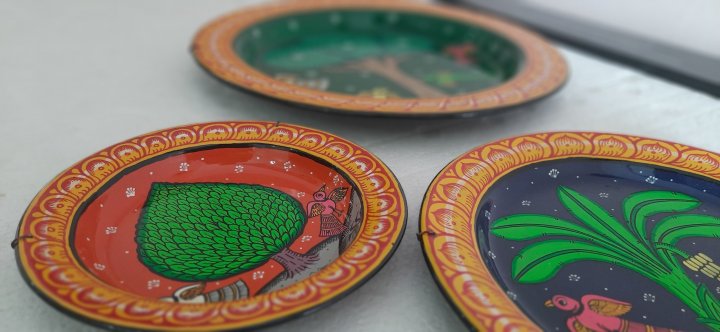
We are in process of revamping ourselves in terms of consumer reach as well as Product line where we want to focus on niche products more. We have relaunched our new-look website with a new logo. Now focusing on new product designs as well as bringing back the traditional Indian games and toys to the fore
We also started have been promoting and documenting the art & artists. That is something we want to take further into a much larger space. We are documenting all the various art forms.
Although we are primarily into the wholesale business, where we make corporate & social gifts, supply to stores, exhibitioners, and are into export, we also have limited online presence. We also work with a designer on developing customized Interior solutions & commissioned art work.
Apart from art workshops, customized solutions and the corporate and social gifting segment,. We are looking for more niche products – hand-painted, customized solutions in personal accessories and lifestyle products. This is something I feel can be one of the very good ways to build awareness, because people would not mind buying a clutch, a sling bag, a dupatta or jewelry on a personal consumption basis rather than a painting or sculpture as gifts.
Important Tips for Picking Out Tribal Handicrafts for Gifting?
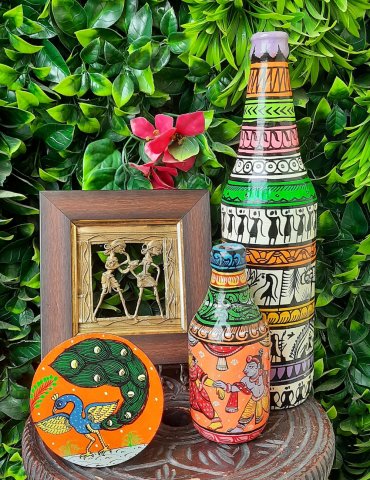
I feel that if you know the recipient's interests then it is much easier. When you are looking for a gift for somebody, for safe options, look for the versatility in terms of the gift being a multi-use product. It should go well with contemporary or Indian décor. Avoid wall décor till the time you know that the person would be willing to put it on the wall. Utility-based items are more for a general gift purpose because people will generally tend to use them more, even if the life of the product is 2-3 years and which have multi-use. Suppose you take a pen stand which can be used as a light holder or a cutlery stand, it is something which you can give. If you know the person well and you are very clear in terms of what kind of liking the person has, then you can think about the colour tones and the likes. Do not take very bulky products as they are very difficult to keep, especially if you do not know the person.
-
 10 Exquisite Pongal Rangoli Designs to Celebrate the Harvest Festival With and Why You Should Practice This Ancient Art (2020)
10 Exquisite Pongal Rangoli Designs to Celebrate the Harvest Festival With and Why You Should Practice This Ancient Art (2020)
-
 Easy and Stylish DIY Home Decor Ideas: Put Your Mind at Ease and Your Hands to Work with These DIY Projects that Double as Home Decor (2020)
Easy and Stylish DIY Home Decor Ideas: Put Your Mind at Ease and Your Hands to Work with These DIY Projects that Double as Home Decor (2020)
-
 Spending More Time at Home Than Ever Before? Then a Revamp is in Order. 8 DIY Home Decor Ideas to Turn Your Home into Living Art (2020)
Spending More Time at Home Than Ever Before? Then a Revamp is in Order. 8 DIY Home Decor Ideas to Turn Your Home into Living Art (2020)
-
 Bring Home the Beauty of the World with Eartthry's Exquisite Handicrafts and Home Décor Collections
Bring Home the Beauty of the World with Eartthry's Exquisite Handicrafts and Home Décor Collections
-
 diy craft materials
diy craft materials
Make a Lifestyle Statement with Indian Tribal Art Pieces in Your Home
Rather than collecting tribal art pieces from other countries, every Indian art lover should start looking and appreciating Indian tribal art form with a different perspective and make it a part of his daily life by bring it to his home. This will not only reflect your rich tastes and love for art but will also ensure that a skilled tribal artisan earns a respectable livelihood and feels proud of his tremendous talent, somewhere in the country. Truly Tribal is the perfect platform to start such a quest.

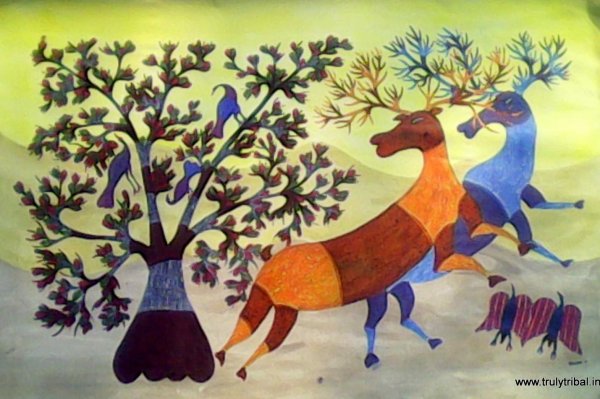
 Highlight the Best Facets of Your Incomparable Beauty: Discover the Best Face Highlighter Currently Available in India and Everything You Need to Know About Using Face Highlighters for Maximum Effect (2023)
Highlight the Best Facets of Your Incomparable Beauty: Discover the Best Face Highlighter Currently Available in India and Everything You Need to Know About Using Face Highlighters for Maximum Effect (2023)
 Forget the Blemishes and Get that Picture Perfect Flawless Radiance on Your Face: Check out the Best Foundations for Oily Skin Currently Available in India and Everything You Need to Know About Makeup Foundations (2023)
Forget the Blemishes and Get that Picture Perfect Flawless Radiance on Your Face: Check out the Best Foundations for Oily Skin Currently Available in India and Everything You Need to Know About Makeup Foundations (2023)
 Make Your Presence Felt Wherever You Go: Discover the Best Perfumes Under 2000 for Both Men and Women to Announce Your Arrival and Make Any Occasion Memorable (2023)
Make Your Presence Felt Wherever You Go: Discover the Best Perfumes Under 2000 for Both Men and Women to Announce Your Arrival and Make Any Occasion Memorable (2023)
 Protect Your Oily Skin from the Harmful Rays of the Sun: Discover the Best Gel Based Sunscreens for Oily Skin and Everything You Need to Know Before Buying One (2023)
Protect Your Oily Skin from the Harmful Rays of the Sun: Discover the Best Gel Based Sunscreens for Oily Skin and Everything You Need to Know Before Buying One (2023)
 Minor Blemishes and Wrinkles Affecting Your Confidence? Check out the Best BB Creams to Conceal Your Worries and Nourish Your Skin to Restore the Healthy, Radiant and Glowing Complexion Back Again (2023)
Minor Blemishes and Wrinkles Affecting Your Confidence? Check out the Best BB Creams to Conceal Your Worries and Nourish Your Skin to Restore the Healthy, Radiant and Glowing Complexion Back Again (2023)
